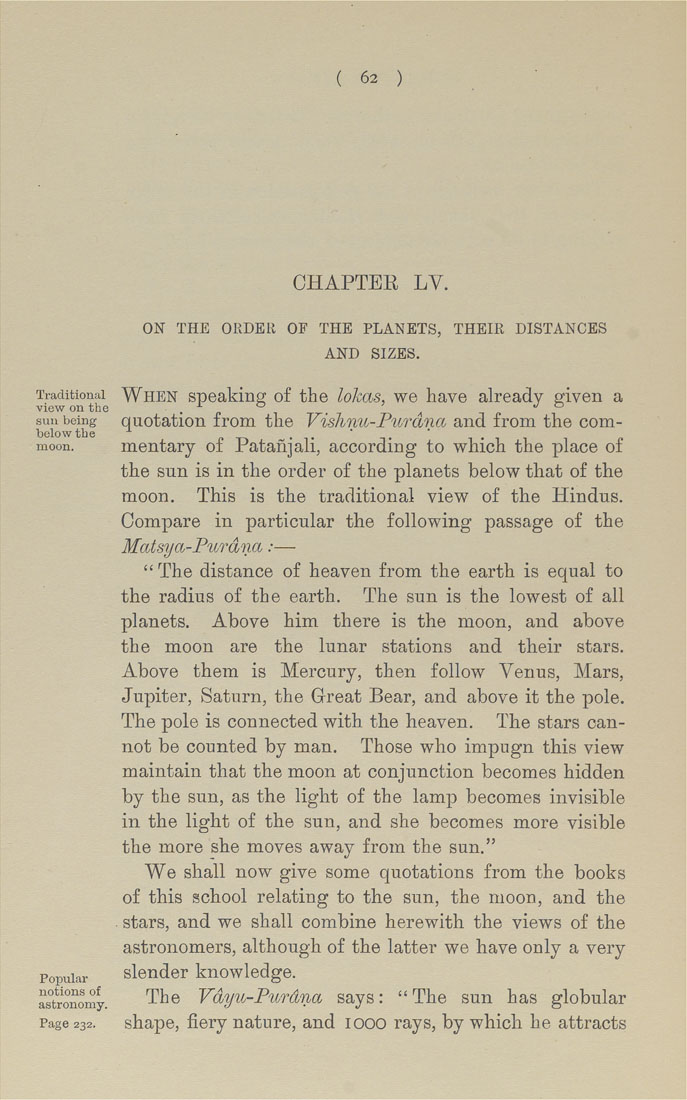Bīrūnī, Muḥammad ibn Aḥmad, Alberuni's India (v. 2)
(London : Kegan Paul, Trench, Trübner & Co., 1910.)
|
||
|
|
|
|
| Page 62 |

( 62 ) CHAPTEE LV. ON THE ORDER OP THE PLANETS, THEIE DISTANCES AND SIZES. Traditional view on the sun being below the moon. Popular notions of astronomy. Page 232. When speaking of the lokas, we have already given a quotation from the Vishnu-Purdna and from the com¬ mentary of Patafijali, according to which the place of the sun is in the order of the planets below that of the moon. This is the traditional view of the Hindus. Compare in particular the following passage of the Matsyct-Purdna:— " The distance of heaven from the earth is equal to the radius of the earth. The sun is the lowest of all planets. Above him there is the moon, and above the moon are the lunar stations and their stars. Above them is Mercury, then follow Venus, Mars, Jupiter, Saturn, the Great Bear, and above it the pole. The pole is connected with the heaven. The stars can¬ not be counted by man. Those who impugn this view maintain that the moon at conjunction becomes hidden by the sun, as the light of the lamp becomes invisible in the light of the sun, and she becomes more visible the more she moves away from the sun." We shall now give some quotations from the books of this school relating to the sun, the moon, and the . stars, and we shall combine herewith the views of the astronomers, although of the latter we have only a very slender knowledge. The Vdyu-Purdna says: " The sun has globular shape, fiery nature, and lOOO rays, by which he attracts |
| Page 62 |







